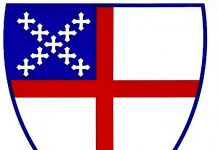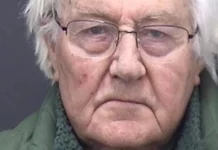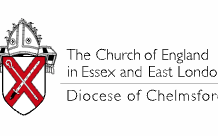
Episcopal leaders in Hawaiʻi are assessing the immediate needs of people who have been impacted by this week’s wildfires on the island of Maui, which have killed at least 55 people and destroyed at least a thousand buildings, including a historic Episcopal church.
The wildfires, which are mostly contained now, prompted the evacuation of more than 11,000 people, including tourists. The worst of the damage was experienced by Maui’s western community of Lahaina, population 12,700, where Holy Innocents Episcopal Church had stood since 1927. Aerial photos of the devastation show whole neighborhoods leveled by five, apparently including the church.
One of the diocese’s immediate priorities is to get in touch with all members of Holy Innocents and make sure everyone is safe and has access to shelter and other immediate needs. Once everyone is accounted for, the diocese will assess the best ways to approach the cleanup process.
“Those I’ve been in contact with are mostly displaced as their homes were demolished by the fire,” the Rev. Bruce DeGooyer, vicar of Holy Innocents, told Episcopal News Service by email. “It is overwhelming here.”
Hawaiʻians know how to prepare for hurricanes and volcanic eruptions, but “even the kupuna — elders — have never experienced anything like [the wildfires].” Hawaiʻi Bishop Robert Fitzpatrick told ENS in a phone interview. “Everyone’s in shock right now, including me.”
Fitzpatrick met with Maui clergy Aug. 10 via Zoom to discuss what they can do to immediately help the Lahaina community, which initially was blocked off to anyone who wasn’t a first responder. Lahaina residents who’ve been evacuated were to be allowed back on Aug. 11, Hawaiʻi Gov. Josh Green said.
Fitzpatrick said he will try to fly to Maui to assess the damage at Holy Innocents next week if possible. The diocese is based in Honolulu on the island of Oahu.
“The short-term issues are going to be helping the people who have been displaced. There were lots of people who had their second homes [in Lahaina] or people who retired there who don’t have long-term ties. I don’t know what this will mean for them,” he said. “And then there are the families that are local, and this is home, so how do we keep them cared for?”
Fitzpatrick said that rebuilding Holy Innocents is “not a priority” while relief efforts are underway, though he noted the church’s building was historically significant for Lahanai, which was the capital of the Hawaiʻian kingdom until 1845. Lahanai later became a popular tourist destination.
“[Holy Innocents] had the most amazing Native Hawaiʻian Kanaka Madonna above the altar, and all the names on the pews were Native Hawaiʻians,” Fitzpatrick said. “We know there’s a lot of history that can’t be recovered.”
Holy Innocents was founded in the late 19th century, and the early worship services were conducted using Hawaiʻian King Kamehameha IV’s translation of the Book of Common Prayer. Kamehameha IV and his wife, Queen Emma, were Anglican. They invited the Church of England to Hawaiʻi to establish the Church of Hawaiʻi, which was the state and national church of the Kingdom of Hawaiʻi from 1862 to 1893, when the Hawaiʻian monarchy was overthrown. The U.S. government annexed Hawaiʻi a few years later, in 1898. It became a state in 1959.
Holy Innocents’ first parish was built in 1872 in Lahanai. In 1927, the church moved into a new and bigger building with a vicarage and parish hall. That remained the parish’s home until it succumbed to this week’s wildfire — the deadliest in Hawaiʻi’s history. The congregation was in the middle of a capital campaign to raise money for renovations when the wildfires started.
The fires were impelled by strong winds brushing through dry vegetation as Hurricane Dora, a Category 4 cyclone, passed near Hawaiʻi without making landfall. The islands of Hawaiʻi and Oahu also experienced wildfires, albeit to much lesser extents than Maui. Hurricane Dora is currently on track to becoming a typhoon.
President Joe Biden has ordered federal assets to Hawaiʻi to assist with fire response. The Hawaiʻi National Guard and cadaver dogs deployed by the Federal Emergency Management Agency are currently helping with search-and-rescue efforts.
Green, the governor, said in a news conference Aug. 11 that Lahanai is “gone,” and that the town looks like a “bomb and fire went off.”
The Hawaiʻi diocese is in contact with Episcopal Relief & Development, which is currently on standby until the diocese is ready to mobilize on-the-ground cleanup efforts.
There are four Episcopal churches on Maui, the second-largest Hawaiʻian island: Church of the Good Shepherd in Wailuku, St. John’s Episcopal Church in Kula, Trinity Episcopal Church By-the-Sea in Kihei and Holy Innocents Episcopal Church in Lahaina. St. John’s will host an emergency food pantry Friday, and Good Shepherd is currently accepting donations for disaster relief, including water, nonperishable food items and clothing.
The Hawaiʻi diocese is coordinating immediate relief efforts through its homeless assistance ministry, A Cup of Cold Water, which is based in Maui. The diocese is also accepting online donations for the ministry through the bishop’s pastoral fund. Donations made to the US Disaster Fund will fund Episcopal Relief & Development and its partners’ assistance efforts.









